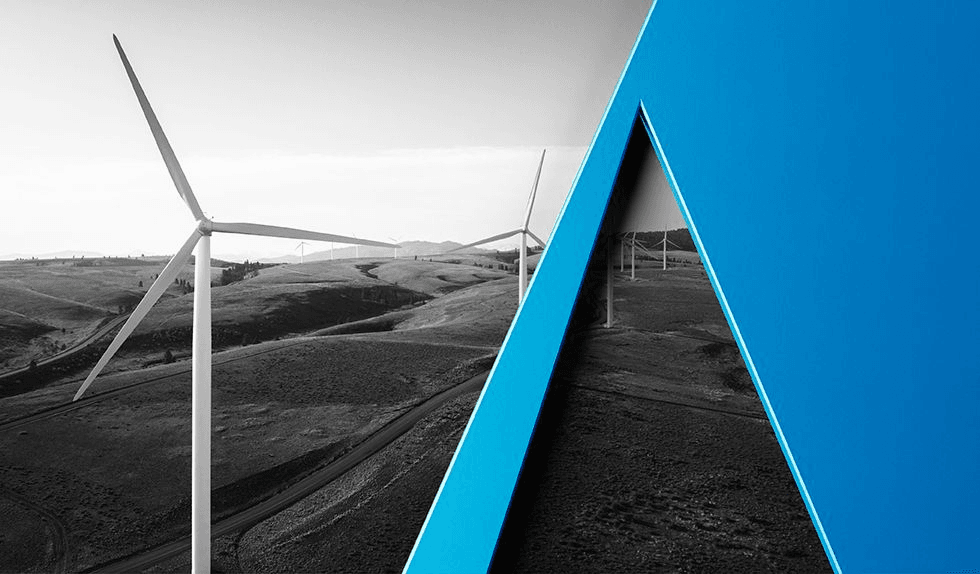The Prohibition Order “applies to a limited number of [Responsible Utilities] and specific BPS electric equipment from the People’s Republic of China that poses an undue risk to the BPS, the security or resilience of critical infrastructure, the economy, national security, or safety and security of Americans.”4 Covered “Responsible Utilities” are those that own or operate “Defense Critical Electric Infrastructure (DCEI) . . . that actively serves a CDF,”5 and DOE states that it will notify affected Responsible Utilities within five business days of the order.6 The Prohibition Order takes effect January 16, 2021 (the “Effective Date”), and will apply to “any Prohibited Transaction initiated on or after the Effective Date.”7
DOE’s action, while it may have significant implications for the affected Responsible Utilities, appears to significantly limit—at least for now—the potential scope of enforcement of the EO through its sharp focus on China, DCEI, CDF and select BPS electric equipment. This should be welcome news to some of the many interested stakeholders for whom the breadth and vagueness of the EO, and the uncertainty surrounding its implementation, has caused persistent heartburn over the past six months. However, the Prohibition Order will not necessarily be DOE’s last action to implement the EO. Indeed, DOE expressly leaves open the possibility of further actions, noting that the Prohibition Order “is in addition to other action that the Secretary may undertake pursuant to EO 13920, including, but not limited to, rulemaking and further orders of the Secretary.”8
Background
In the EO, President Trump found that “unrestricted acquisition or use in the United States of bulk-power system electric equipment designed, developed, manufactured, or supplied by persons owned by, controlled by, or subject to the jurisdiction or direction of foreign adversaries augments the ability of foreign adversaries to create and exploit vulnerabilities in bulk-power system electric equipment,”9 and that, as a result, “the unrestricted foreign supply of bulk-power system electric equipment constitutes an unusual and extraordinary threat to the national security, foreign policy, and economy of the United States.”10 President Trump therefore declared a “national emergency with respect to the threat to the United States bulk-power system,”11 and invoked his authority under the International Emergency Economic Powers Act “to direct responsive measures.”12 The Prohibition Order is one such responsive measure.
In the Prohibition Order, U.S. Secretary of Energy Dan Brouillette finds the action to be “reasonably necessary to address the threat posed to the BPS by the [People’s Republic of China] as a foreign adversary” within the meaning of the EO,13 noting that, “[b]ecause the equipment identified in [the] Prohibition Order as Regulated Equipment could serve as instruments or tools to threaten the BPS and the national security of the [United States], the Secretary is taking . . . protective action . . . to prevent Prohibited Transactions.”14 Specifically, DOE states that it “has reason to believe . . . that the [Chinese] government . . . is equipped and actively planning to undermine the BPS.”15 Such attacks, according to DOE, “are most likely during crises abroad where Chinese military planning envisions early cyberattacks against the electric power grids around CDFs in the [United States] to prevent the deployment of military forces and to incur domestic turmoil.”16
“Prohibited Transactions” and “Regulated Equipment”
To address the perceived threat, the Prohibition Order “prohibits utilities that supply CDFs at a service voltage of 69kV or above from acquiring, importing, transferring, or installing BPS electric equipment, and is specific to select equipment manufactured or supplied by persons owned by, controlled by, or subject to the jurisdiction or direction of the People’s Republic of China.”17 DOE further limits application of the Prohibition Order to only certain parts of Responsible Utilities’ systems, noting that it “applies from the point of electrical interconnection with the CDF up to and including the next ‘upstream’ transmission substation.”18
“Regulated Equipment” subject to the Prohibition Order includes:
- Power transformers with low-side voltage rating of 69 kV or higher and associated control and protection systems like load tap changers, cooling systems and Sudden Pressure relays.
- Generator step up transformers with high-side voltage rating of 69 kV or higher and associated control and protection systems like load tap changers, cooling systems and Sudden Pressure relays.
- Circuit breakers operating at 69 kV or higher.
- Reactive power equipment (Reactors and Capacitors) rated at 69 kV or higher.
- Associated software and firmware installed in any equipment or used in the operation of items listed above.19
“Regulated Equipment” also includes “digital components that control the operation of Regulated Equipment and are manufactured or supplied by persons owned by, controlled by, or subject to the jurisdiction or direction of” the People’s Republic of China.20
DOE notes that the “Regulated Equipment” list represents “a subset” of BPS electric equipment identified in a North American Electric Reliability Corporation (NERC) “Recommendation to Industry” issued in July 2020.21 The list is substantially narrower than the definition of “bulk-power system electric equipment” in the EO and does not include, for example, “large generators” (including solar photovoltaic electric power generation equipment or inverters that could qualify as such) or “generation turbines.”
Compliance and Next Steps: DCEI Identification; Triennial Certifications; Waivers
DOE directs “Responsible Utilities” covered by the Prohibition Order to “work with DOE to assist in the identification of DCEI and any load shedding and system restoration contingency planning required to assure the energy and missions of CDFs.”22 Specifically, the Prohibition Order directs “[e]ach Responsible Utility . . . to designate (or to take all action reasonably available to it to cause the relevant regional [reliability] entity[, as approved by NERC,] to designate) each CDF as a priority load in the applicable load shedding and system restoration plans.”23
By February 15, 2021, each Responsible Utility “shall file a certification with the Department, under penalty of perjury, that since the Effective Date: (a) It has designated (or taken all action reasonably available to it to cause the relevant regional entity to designate) each CDF as a priority load in the applicable system load shedding and restoration plans.”24
Then, by March 17, 2021, and “once every three years thereafter for as long as [the] Prohibition Order is in effect,” each Responsible Utility “shall file a certification with the Department, under penalty of perjury, that since the Effective Date: (a) It has not entered into a Prohibited Transaction; and (b) It has established an internal monitoring process to accurately track future compliance with [the] Prohibition Order.”25
Any Responsible Utility may request that DOE waive “any term” of the Prohibition Order “for good cause shown.”26
Potential Penalties
The Prohibition Order provides for both civil and criminal penalties. On the civil side, any person who “violates, attempts to violate, conspires to violate, or causes any knowing violation” of the Prohibition Order may be subject to a “maximum civil penalty not to exceed the greater of $250,000,” periodically adjusted for inflation, “or an amount that is twice the amount of the transaction that is the basis of the violation with respect to which the penalty is imposed.”27 DOE states that it will notify parties of alleged violations and proposed penalties in writing, and that recipients of such notices will have 30 days to show cause in writing why a penalty should not be imposed. The Secretary “shall review any presentation and issue a final administrative decision within thirty (30) calendar days of receipt of [any such] petition.”28
On the criminal side, “[a] person who willfully commits, willfully attempts to commit, or willfully conspires to commit, or aids and abets in the commission of a violation of [the Prohibition] Order—and thereby a violation of [the International Emergency Economic Powers Act]—shall, upon conviction thereof, be fined not more than $1,000,000, or if a natural person, may be imprisoned for not more than twenty (20) years, or both.”29
DOE also notes that the penalties available under the Prohibition Order “are without prejudice to other penalties, civil or criminal, available under law,” including, specifically, under 18 U.S.C. § 1001, which provides for fines and/or imprisonment for knowing and willful falsification or concealment of material facts and the making of false, fictitious or fraudulent statements or representations regarding “any matter within the jurisdiction of any [federal] department or agency.”30
Rehearing Opportunity
While DOE’s choice to issue the Prohibition Order, rather than a notice of proposed rulemaking regarding implementation of the EO, limits opportunities for further industry input to shape the implementation scheme with respect to China, DOE did provide an opportunity for rehearing. Specifically, “[a]ny person aggrieved by [the] Prohibition Order may petition the Secretary for a rehearing no later than March 2, 2021.”31 Should there be any request for rehearing, the Secretary “shall have power to grant or deny rehearing or to abrogate or modify [the] Prohibition Order without further hearing.”32 If the Secretary does not act on a rehearing request within 30 days, “such application may be deemed to be denied,” and the aggrieved party could then seek judicial review.33 DOE states, however, that “[u]ntil the record in a proceeding seeking rehearing of [the] Prohibition Order shall have been filed for judicial review in a court of competent jurisdiction, the Secretary may at any time, upon reasonable notice and in such manner as it shall deem proper, modify or set aside, in whole or in part, any findings or [the] Prohibition Order.”34
1 Exec. Order No. 13,920, Securing the United States Bulk-Power System, 85 Fed. Reg. 26,595 (May 4, 2020).
2 U.S. Dep’t of Energy, Prohibition Order Securing Critical Defense Facilities (6450-01-P), at 1 (Dec. 17, 2020), https://www.energy.gov/sites/prod/files/2020/12/f81/BPS%20EO%20Prohibition%20Order%20Securing%20
Critical%20Defense%20Facilities%2012.17.20%20-%20SIGNED.pdf (“Prohibition Order”).
3 16 U.S.C. § 824o-1(c) (2018).
4 U.S. Dep’t of Energy, Securing the United States Bulk-Power System Executive Order, https://www.energy.gov/oe/bulkpowersystemexecutiveorder (last visited Dec. 18, 2020). See also Press Release, U.S. Dept. of Energy, Secretary of Energy Signs Order to Mitigate Security Risks to the Nation’s Electric Grid (Dec. 17, 2020), https://www.energy.gov/articles/secretary-energy-signs-order-mitigate-security-risks-nations-electric-grid (“DOE Press Release”).
5 Prohibition Order at 6. DCEI “means any electric infrastructure located in any of the 48 contiguous States or the District of Columbia that serves a facility designated [as a CDF] by the Secretary pursuant to [16 U.S.C. § 824o-1(c)], but is not owned or operated by the owner or operator of such facility.” 16 U.S.C. § 824o-1(a)(4).
6 Prohibition Order at 7.
7 Id.
8 Id. at 10.
9 EO at 26,595. See also Prohibition Order at 7-8.
10 EO at 26,595. See also Prohibition Order at 8.
11 EO at 26,595. See also Prohibition Order at 8.
12 Prohibition Order at 8.
13 Id. at 9.
14 Id.
15 Id. at 2.
16 Id. at 3.
17 DOE Press Release at 1. See also Prohibition Order at 6.
18 DOE Press Release at 1. See also Prohibition Order at 6.
19 See Prohibition Order, Attachment 1 (listing “Regulated Equipment”).
20 Prohibition Order at 6.
21 Id. at 10 (citing NERC Alert ID R-2020-07-08-01 (July 8, 2020)).
22 Id. at 7.
23 Id.
24 Id. at 11.
25 Id.
26 Id. at 12.
27 Id.
28 Id.
29 Id. at 13.
30 Id.
31 Id. at 14.
32 Id.
33 Id.
34 Id.



